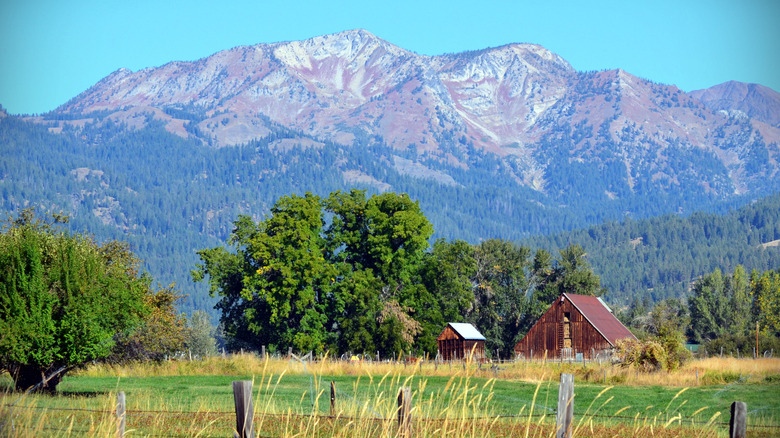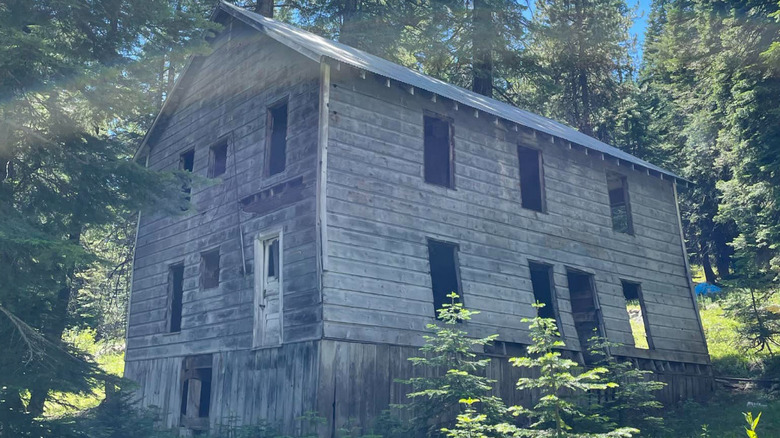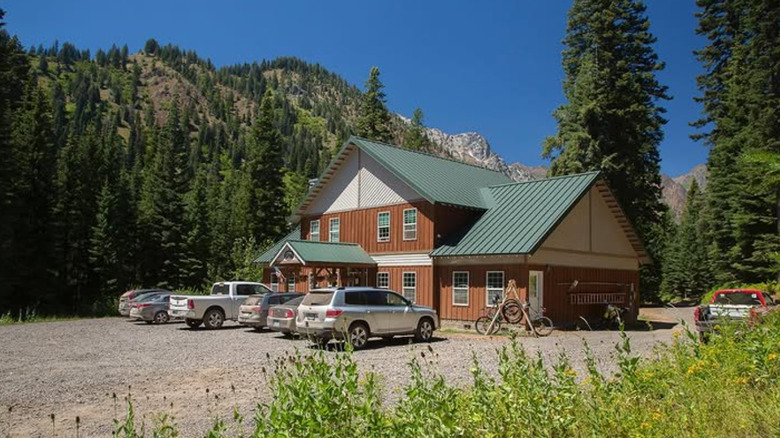
When John Sutter and his carpenter James W. Marshall discovered gold in California in 1848, they hoped to keep their profitable find a secret. Of course, the cat was soon out of the bag and by the end of 1855 an estimated 300,000 people had traveled westward in search of a fortune, gathering millions of troy ounces of gold in the process. Even today, the Golden State (it's even in the name) is most associated with the Gold Rush. But when gold was discovered in Oregon creeks in the early 1850s, it attracted
its own influx of miners and fortune-seekers, a process that would continue over the subsequent decades.
One of the towns that arose to meet the demands of the booming industry was Cornucopia — whose name literally means the abundant supply of a good thing — sitting 4,000 feet above sea level in Pine Valley. Established in the 1880s and built next to its namesake Cornucopia mine, the town's population had grown to 700 residents by the early 20th century, making it one of the largest mining hubs in the United States. After braving the stock market crash of 1929 and the Great Depression of the '30s, Cornucopia eventually ran out of luck during World War II and continued on a steady decline until it was fully abandoned in the 1970s.
Nevertheless, a lack of vigor in the town hasn't stopped the travelers from coming. Modern visitors to Cornucopia can stay in a public lodge or wood-paneled private cabins at night, and hike to the mines and abandoned houses or canter through the forests on horseback by day. While in winter, when snow blankets Cornucopia and the surrounding Wallowa Mountains, snowmobiling and skiing are the leisure activities of choice.
Read more: 15 Underrated Vineyards To Visit In California
Exploring The Ghost Town Of Cornucopia

It's not unheard of for tourism to boom in an eerie and abandoned mining town like Cornucopia. People tend to be fascinated by ghost towns, drawn to that which was built to harbor life but can no longer sustain it. That's why we have terms like dark tourism, or thanatotourism, referring to tourism in places associated with death and suffering, as well as travelers who call themselves urban explorers ("urbex" for short) and wander through ruins and derelict buildings for pleasure.
Working as a counterbalance to the macabre atmosphere, though, is Cornucopia's stellar beauty. Tectonic processes have warped and buckled the land in this northeastern corner of Oregon, creating a wild landscape of jagged granite mountains and deep river canyons. This juxtaposition of urban decay and immense natural scenery is one of Cornucopia's chief virtues. One of the more interesting ways to experience this is on the Mine History Ride, organized by a local lodge, which takes guests on horseback through the old town and up to one of the abandoned mine shafts, where you'll also be greeted by panoramic views.
Some prefer to explore the area on foot via the paths once used by miners — albeit the town of today is a little more overgrown. If you want to hike further afield, from the Cornucopia trailhead you can access both the East Fork and Pine Lakes trails. Another option is to drive out to Hells Canyon, which, at 2,000 feet deeper than the Grand Canyon, is the deepest canyon in North America.
Staying In Cornucopia

Being six hours by car from Portland, and around three hours from Boise, Idaho, it definitely makes sense to view Cornucopia as a multi-day trip and stay at least one night in the area. The Cornucopia Lodge offers a couple different styles of accommodation, and comes with a restaurant, excellent views of the Wallowa Mountains from its outdoor terraces, and mountain bike rentals for exploring the ghost town. Guests seeking more privacy can book standalone cabins scattered throughout the woods, each with a memorable name that honors one of the town's former mines, like Jack of Diamonds, Union-Companion, Last Chance, and Queen of the West.
The lodge can also provide support to hikers, including ferrying your gear between base camps in the mountains — a great option if you want to explore the Eagle Cap Wilderness, a 360,000-acre area of alpine peaks and forest (and former home of the Nez Perce tribe) that's nestled on Cornucopia's doorstep. Or if you'd prefer to embark on a more leisurely day trip, consider visiting Joseph, which is around two and a half hours by car from Cornucopia and known as Oregon's "Little Switzerland" because of its cozy downtown and scenic alpine beauty. The drive here will take you along the Hells Canyon Scenic Byway, which is an epic journey in itself.
Ready to discover more hidden gems and expert travel tips? Subscribe to our free newsletter for access to the world's best-kept travel secrets.
Read the original article on Islands.













